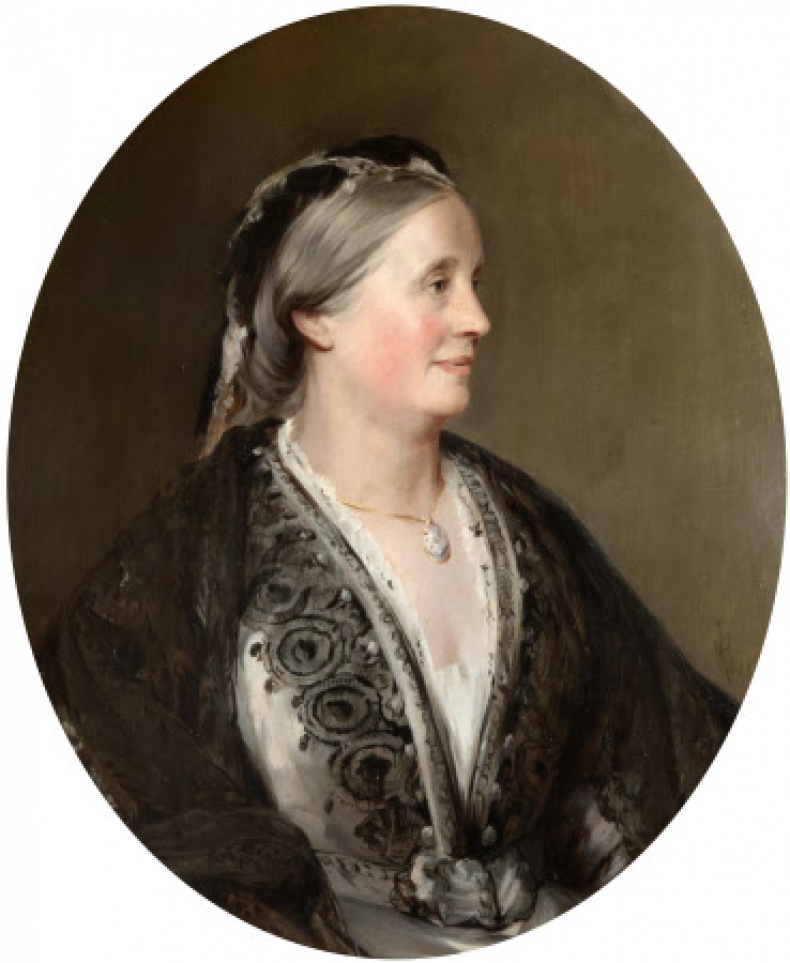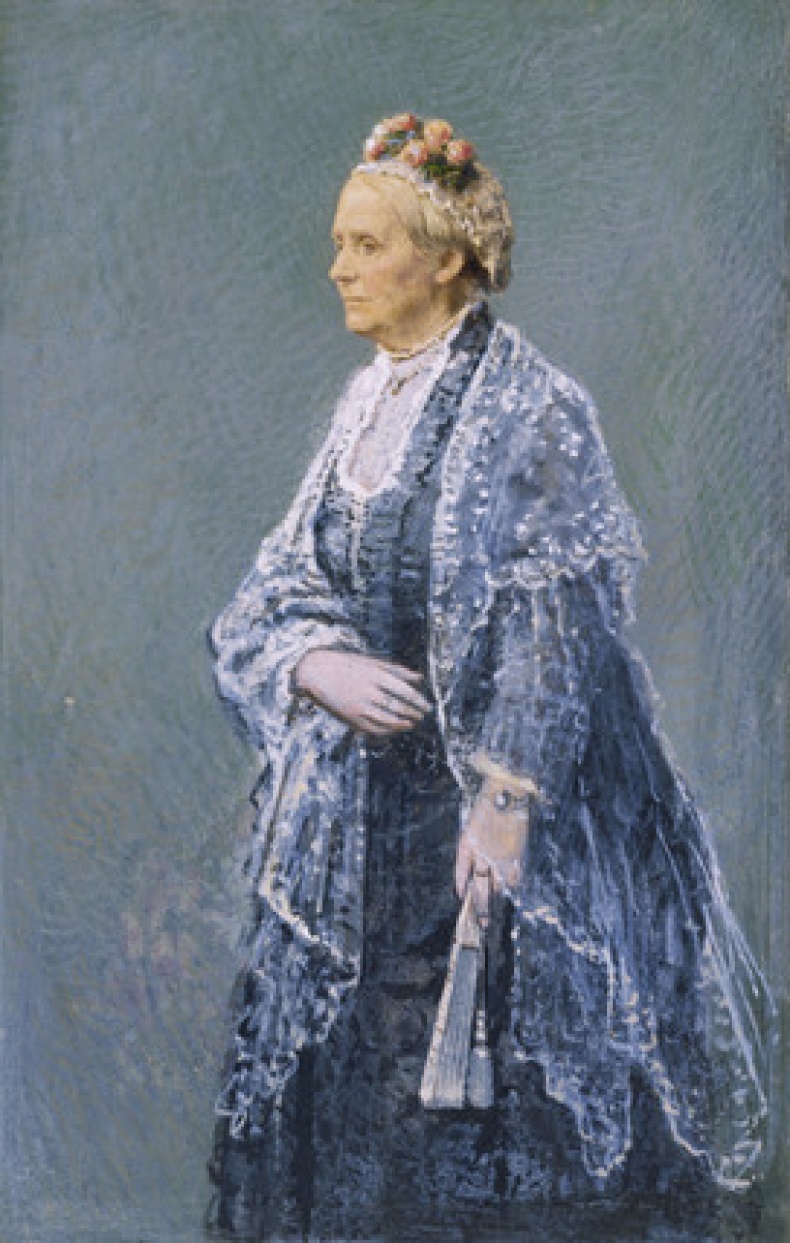

Armstrong, Margaret Lady
1807-1893
Garden designer and natural historian
Lady Margaret Armstrong was the wife of famous Newcastle industrialist Lord William Armstrong (1810 -1900), who was knighted in 1859 and raised to the peerage as Baron Armstrong of Cragside in 1887. The couple first met during one of William’s visits to the engineering works owned by Margaret’s father, William Ramshaw, in Bishop Auckland, when he was a boarder at Bishop Auckland Grammar School. After a long courtship, the couple married in 1835.
Margaret Armstrong may have been overshadowed in history by the prominence and many achievements of her husband, but she was in her day a much-admired figure in her own right, with an independent mind and independent means. She was an only child, doted on by her father William (1777-1854) and mother Elizabeth (1782-1862), and brought up in a comfortable household in the Market Place in Bishop Auckland. It was William and Elizabeth who bought the land for Armstrong’s first home, Jesmond Dene, in Newcastle, which was donated to the City in 1884 together with its house, banqueting hall, Armstrong Bridge and Armstrong Park. Margaret inherited from her parents, and in doing so secured a degree of financial independence.
Margaret was an attractive, healthy, energetic woman. She had an original mind and a talent for landscape gardening, which first came to the fore in laying out the gardens at Jesmond Dene. She had a passion for botany, collecting and tending rare plants. This talent was exercised on a grand scale at Cragside, the country house she and William had built near Rothbury in Northumberland in the arts and crafts style. Planning began there in 1863 and construction took place in a series of phases over two decades. The house, now one of the jewels in the crown of the National Trust, is famously the first house in the world to use hydroelectric power, and the first to be lit by Joseph Swan's newly-invented incandescent light bulbs. Outdoors, Margaret and William worked together to create an extensive, awe-inspiring garden in what initially was rough, unpromising grounds, directing the planting of seven million trees and countless varieties of shrubs and herbaceous plants.
Margaret took an interest in all aspects of William’s work – business and scientific – and served as his confidant and advisor. She enjoyed the role of society hostess and entertained numerous foreign diplomats, businessmen and royalty. Her one sorrow shared equally by William, was their failure to have children. This must have been difficult to bear, given all that the couple had to offer, and perhaps explains the strenuous efforts they made to make Cragside into a place of enduring beauty.
Philanthropy came naturally to Margaret Armstrong and she contributed heavily to causes of benefit to young people such as schools, hospitals and charities promoting the arts and recreational activities. Especially dear to her heart was Newcastle’s Hospital for Sick Children. She funded scholarships for gifted children to attend the National Training School for Music, what is now known as the Royal College of Music. A wide range of other charities benefited from her generosity. Shortly before her death, she bought a large property in Tuthill Stairs, Newcastle, with the intention of converting it sheltered accommodation for elderly people, and in her will, she left a legacy to the Northern Ladies Annuity Society, which provides relief from poverty for “ladies in reduced circumstances.”
Her most enduring act of philanthropy is the contribution she made to the building of the Hancock museum of natural history, what is now known as The Great North Museum. Both she and William were active members of the Natural History Society of Northumbria, which had been founded in 1828 as an offshoot of the Literary and Philosophical Society of Newcastle upon Tyne. In 1878, plans for a much larger museum were announced by John Hancock, a local naturalist and taxidermist. A large part of the £40,000 construction cost was met by William Armstrong, who donated £11,500, a princely sum at the time. What is less well known is that Margaret contributed a further £4,000 from her own fortune to decorate two reception rooms. The official opening of the museum in August 1884 by the Prince and Princess of Wales was followed by celebrations at Cragside hosted by Lord and Lady Armstrong.
References
Bastable, M.J. (2004). Arms and the State: Sir William Armstrong and the Remaking of British Naval Power, 1854–1914. Burlington: Ashgate.
Heald, H. (2010). William Armstrong: Magician of the North. Newcastle upon Tyne: Northumbria Press.
Linsley, S.M. 'Armstrong, William George, Baron Armstrong (1810–1900), armaments manufacturer and industrialist', Oxford Dictionary of National Biography, Available here (Accessed: 04/07/2018).
Newcastle University Library. (2018). Special Collections: Lord Armstrong, Available here (Accessed: 04/07/2018).
Wikipedia. (2018). William Armstrong, 1st Baron Armstrong, Available here (Accessed: 04/07/2018).